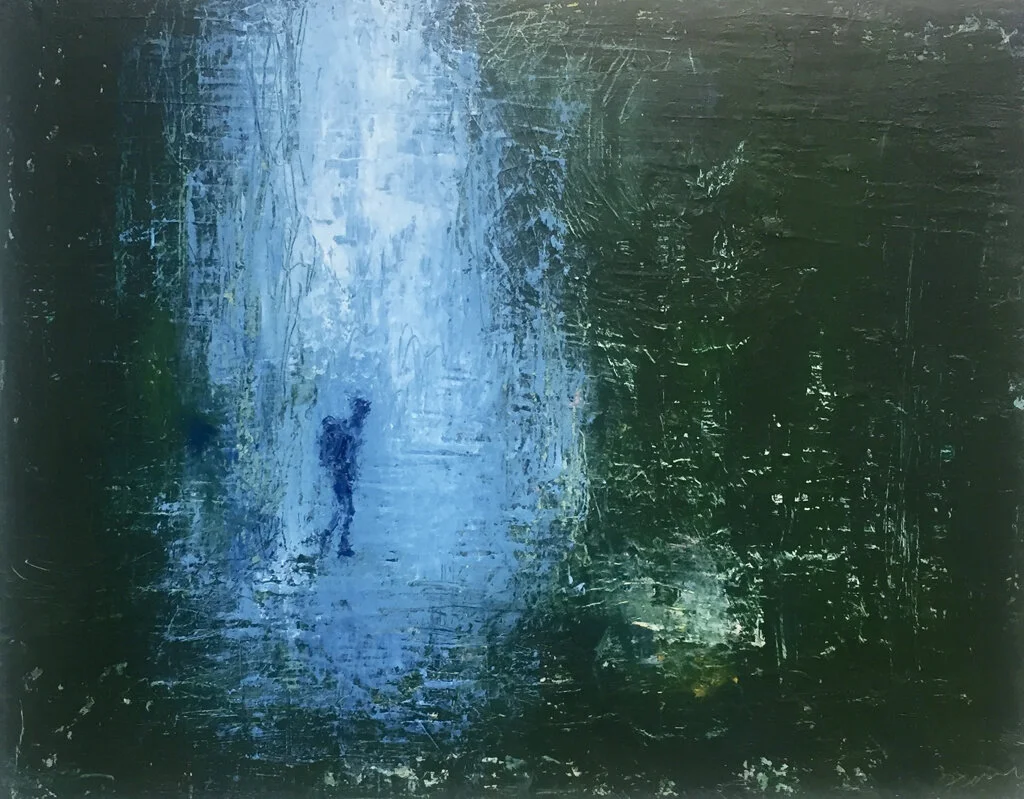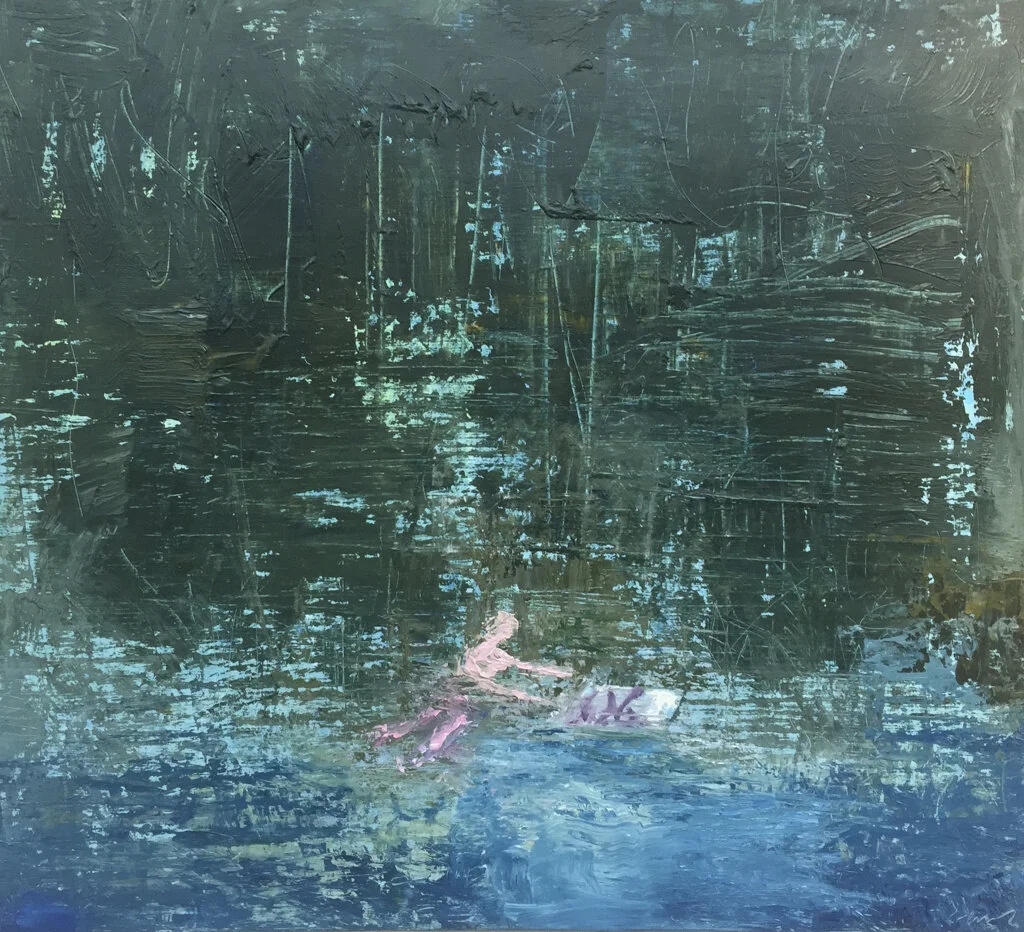
Reviews
Review: How To Get Lost
Karen Strang
The Scottish painter John Ferry's latest works collectively named ‘How To Get Lost’ form a consummate body of smaller canvases and cabinet works in oil and watercolour. Developing from the strong signature of figuration of individuals in sparsely populating mysterious locations, Ferry immerses the figure into a heightened wilderness swathed with organic ambiguity. Near still water shimmers with electric hues running below the surface. Soft colour fields bristle with scratching pigments, echoing nature's own dynamic play.
The largest painting 'Wild Swimming' seduces the viewer by the expanse of reflective colour; only after we have submerged ourselves do we shift our gears of perception: details emerge, narratives form.
Ferry is a painter who can handle oil paint to exploit its malleability with accomplishment. He employs scraffito, scraping and impasto, layering and cutting through the canvas as if taking his own exploratory journey to the depths of the unknown. Loss is not only about losing one’s bearings. 'Ode to Dolores' is in part a paean to the singer whose death was announced while Ferry was working on this series. Fragments of human experience are embedded in these works. These are contemplative pieces. Like the figure in the paint, we too lose the constraint that fear of the everyday imposes on our worldly existence.
One of the unifying factors of these works is that although we sense we are gazing into an unrestrained natural expanse, the sky is only ever implied by reflection. And rarely are we grounded by the horizon line, though in the watercolour 'Journey' we are confronted by a river whose compositional layering makes the viewer feel they have stumbled upon a clandestine scene of adventurers, perhaps getting lost in a more conventional story line than 'Found Sign 90', whose title adds to a mysterious narrative with no bank to grasp or navigate through.
The American nomadic intellectual Rebecca Solnit is an inspiration to John. The title refers to 'A Field Guide to Getting Lost', her eloquent address and remedy of today's collective anxiety apropos the political world order. It's no surprise to learn that John follows in the footsteps of other creative thinkers who advocated walking as a means of spiritual and intellectual sustenance, such as Nietzsche, Thoreau and that alleged 'Scot' Kant.
Immersing oneself in nature, one’s heart beats at walking pace, making us more attuned to the world around us, sloughing off the negative energy that permeates and ferments the man made arena of materialism, power and greed. I am reminded that Rimbaud indeed walked himself to death. In getting lost here, we are more than likely to come across treasure.
Karen Strang, 30.03.18

How To Get Lost, Oil on Canvas, 2018. 45 x 35 cm.

How To Get Lost, Oil on Canvas, 2018, 45 x 35 cm

Found Sign: 90, Oil on Canvas, 2018, 55 x 45 cm

Ode To Dolores, Oil on Canvas, 2018, 55 x 45 cm